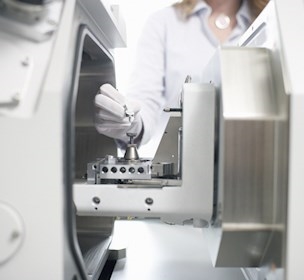FORCE Technology and LEGO unveil sustainable plastic techniques with nanotechnology
FORCE Technology and LEGO develop coloured plastic surfaces without use of environmentally problematic dyes or colour pigments as part of a research project on plastics by the Højteknologifonden.
New technology with less environmental load
Nanotechnology provides new possibilities of creating visual effects, including iridescence, decoration and reflecting surfaces and reducing the amount of environmentally problematic material in the production significantly.
Today it is almost possible to imitate the colour properties of the butterfly’s wing on plane plastic surfaces. But by use of new technology we can create nanostructures on curved surfaces such as e.g. the head of a LEGO figure.
The secret is to shape traditional plastic materials in moulds with special nanostructured surfaces, which are then replicated on the plastic items. The surface will then reflect light that to the human eye looks like colours.
FORCE Technology has invested in a new and very advanced optical 3D microscope that can visualise and measure even very small structures over a large area. The microscope is the only one of its kind in Denmark and it is quite essential to the technological development of the injection moulding moulds and process.
Focus on plastic with support from the Højteknologifonden (The Danish National Advanced Technology Foundation).
FORCE Technology is a partner in the four-year long project Nanoplast, supported by the Danish National Advanced Technology Foundation, of which the LEGO project is a part. FORCE Technology’s participation is due to many years’ surface characterisation and intense increased focus on plastic technology.
The total four year research project includes perspectives such as plastic surfaces with optical properties and self-cleaning plastic surfaces. It is the Danish National Advanced Technology Foundation’s highest financial stake to date, and among other it involves The Technical University of Denmark, DBI Plastics, NIL Technology, ToolPartners, InMold Biosystems, SE Design and the plastics industry in Denmark.
LEGO is provided with a new perspective – Nature feels better
Senior Director Per Høvsgaard from LEGO expects a lot of the new plastic surfaces: “With LEGO our goal is to leave nature in better shape than when we took it over. Therefore this project is very interesting to us. We hope that at some point we can start a production without adding colour to the LEGO bricks at all! This way we take another step toward our goal and at the same time we decrease our production costs. With the use of nanoplastics we will obtain a faster production flow by use of significantly less raw materials”.
“This project entails making us richer when we end it than when we entered it”, continues Per Høvsgaard. “Just participating in the network with other companies provide us with the possibility of challenging our present technology. Our tools’ manufacturing will be checked and we get competent feedback from an accredited laboratory that reviews our test methods in search for optimisation”.
"Another aspect is the possibility of recycling plastics. We expect shortages in raw materials and can already now see that it would be easier for us to recycle plastic materials with the nanostructures instead of plastic materials with added colouring”, concludes Per Høvsgaard from LEGO.



